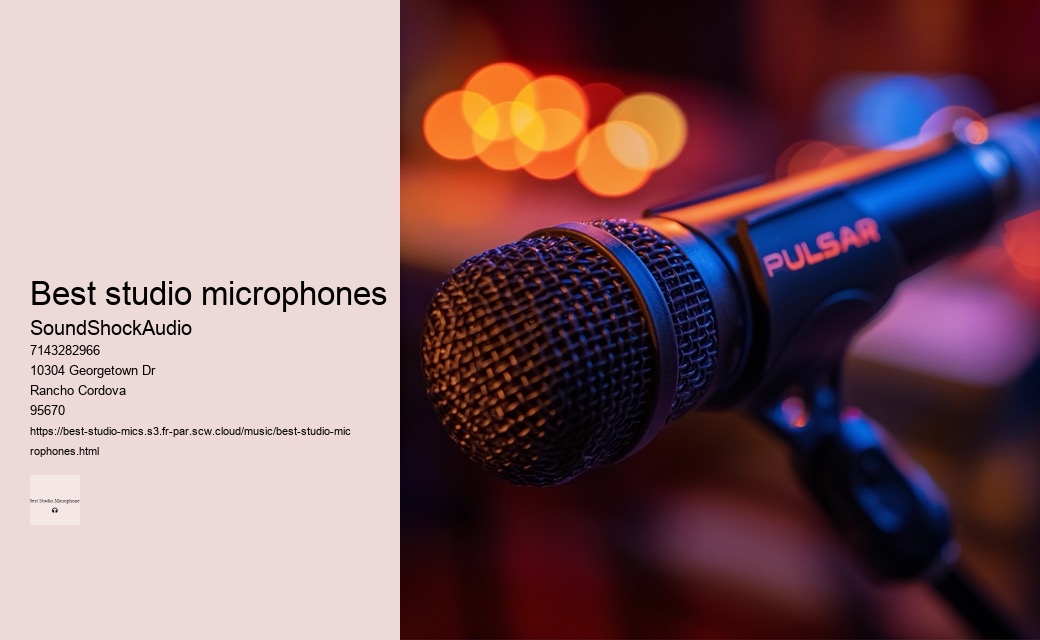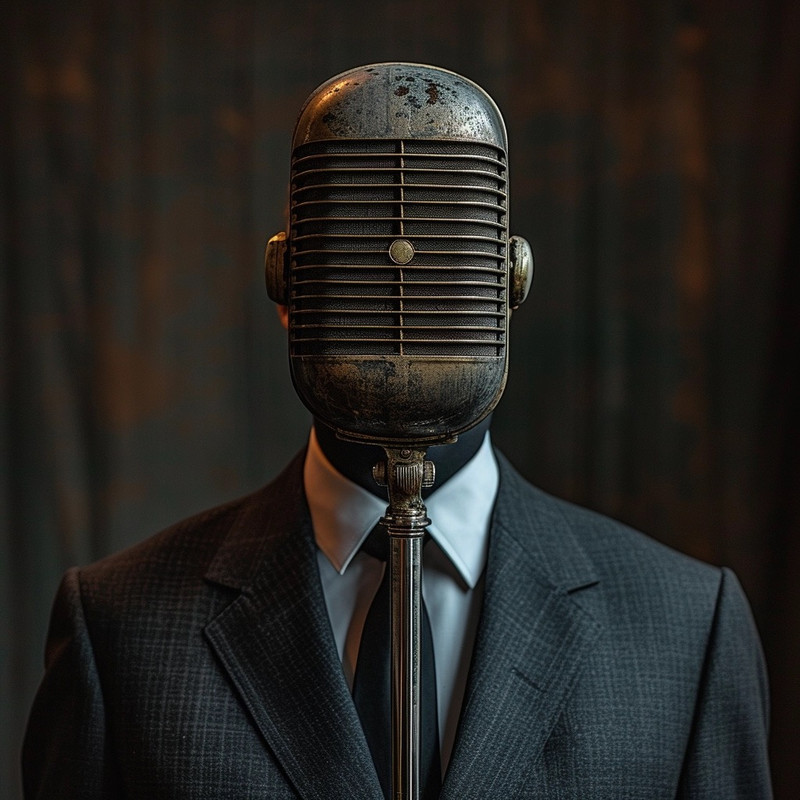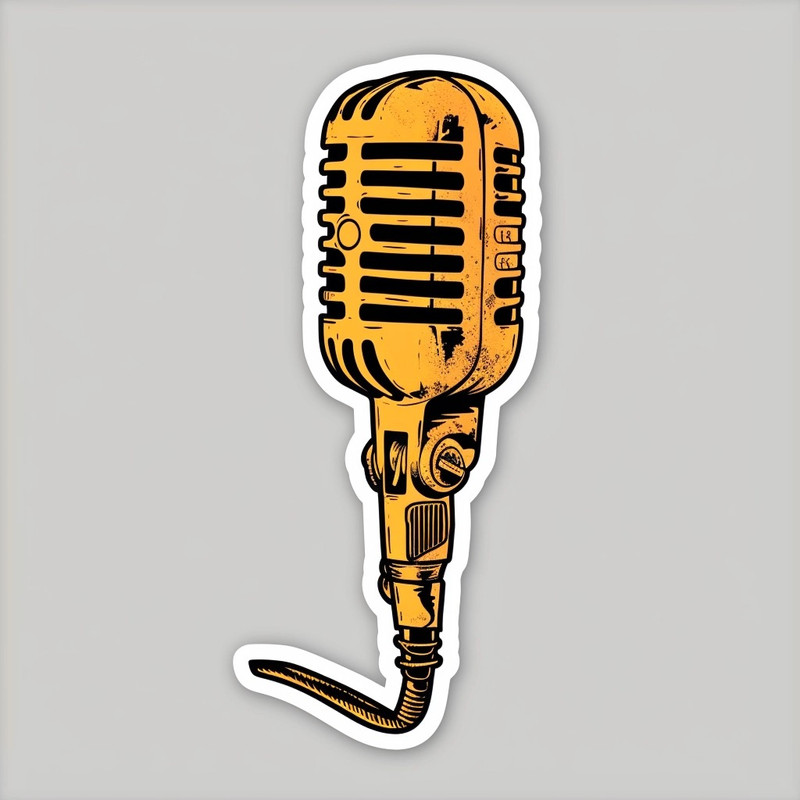

Firstly, consider the microphone's type: dynamic or condenser. In essence, even the best studio microphones rely on their environmental custodians—isolation and acoustic treatment—to deliver their full potential. XLR microphones connect to recording equipment using three-pin or 5-pin connectors.
Types of Studio MicrophonesIn the quest for audio excellence, one pivotal question often emerges among musicians, podcasters, and audio engineers alike: What is the best studio microphone to transform recordings into professional masterpieces? You can sing into it (Kurt Cobain sang into his).
It's an excellent mic for vocals and is arguably better for instruments. Nevertheless, these finer tools offer nuanced detail that can distinguish amateur efforts from polished productions – provided funds allow such luxury indulgence. To find out which microphone to buy, check out the best studio microphones on SoundShockAudio..
It makes untreated rooms sound fantastic. Sennheiser deserves a big thank you for this simple idea.
This signal is most often sent to a studio headphone or monitor, which causes the speaker cones to vibrate. You'll need a good vocal microphone even if you only use virtual instruments. Its built-in pop filter and shock mount contribute greatly to reducing unwanted noise, thus ensuring pristine takes even in less-than-ideal acoustic environments.
The juxtaposition of 'vintage' and 'modern' may seem paradoxical, yet today's ribbon mics harmoniously blend historic sonic characteristics with contemporary durability enhancements. The iRig Stream Mic Pro, for example, is a perfect example.
From the classic vocal recordings of David Lee Roth and Bon Scott to the holy-grail kick-drum sounds of Dave Grohl or Daft Punk. In contrast, off-axis placement often results in a nuanced alteration of frequency response, potentially leading to sound coloration that can be both advantageous and detrimental depending on desired outcomes.
The synergy between preamps and audio interfaces cannot be overstated. The 10 best vocal studio microphones are presented in the highest quality.
When it comes to recording, the quality of the microphone can make a significant difference in the final product. A good studio microphone is essential for capturing the full range of frequencies and nuances of the sound source, whether it's a voice, an instrument, or any other audio.
Condenser microphones, for example, are known for their sensitivity and wide frequency response, which allows them to capture sound with great detail and clarity 2 6 22 24.
They are particularly effective in studio environments where capturing the subtle details of a performance is crucial. The diaphragm of a condenser microphone is lighter and responds more accurately to the intricacies of sound, which is why they are often the preferred choice for studio recordings 13 24.
Good studio microphones are versatile and can be used to record a wide variety of sound sources. They come with different polar patterns and settings that can be adjusted to suit different recording situations, from vocals to acoustic instruments to ambient room sounds 1 3 421. This versatility is important for achieving the desired sound for a particular project.
The dynamic range and transient response of a microphone are also important factors. A good studio microphone can handle both quiet and loud sounds without distortion, capturing the dynamics of a performance accurately 2 6 22. This is particularly important for music that has a wide dynamic range or for capturing the attack of percussive instruments.
A lower noise floor is another advantage of a good studio microphone. This means that the microphone itself adds very little noise to the recording, which is essential for professional-quality audio 2 6.
The sensitivity of the microphone also plays a role in how well it can pick up quiet sounds or sounds from a distance without losing quality 24.
While condenser microphones are known for their superior sound quality, dynamic microphones are valued for their durability and ability to handle high sound pressure levels 10 22.
This makes them suitable for recording loud sources like drums or guitar amplifiers. However, for studio work where sound quality is the top priority, condenser microphones are generally preferred 19.
In summary, a good studio microphone is crucial for recording because it affects the fidelity, clarity, and overall quality of the audio captured. It allows for greater detail and a more accurate representation of the sound source, which is essential for professional recordings. Whether you're a musician, a voice actor, or a sound engineer, investing in a high-quality studio microphone can significantly elevate the quality of your work.
A microphone, colloquially called a mic (/maɪk/),[1] or mike,[a] is a transducer that converts sound into an electrical signal. Microphones are used in many applications such as telephones, hearing aids, public address systems for concert halls and public events, motion picture production, live and recorded audio engineering, sound recording, two-way radios, megaphones, and radio and television broadcasting. They are also used in computers and other electronic devices, such as mobile phones, for recording sounds, speech recognition, VoIP, and other purposes, such as ultrasonic sensors or knock sensors.
Several types of microphone are used today, which employ different methods to convert the air pressure variations of a sound wave to an electrical signal. The most common are the dynamic microphone, which uses a coil of wire suspended in a magnetic field; the condenser microphone, which uses the vibrating diaphragm as a capacitor plate; and the contact microphone, which uses a crystal of piezoelectric material. Microphones typically need to be connected to a preamplifier before the signal can be recorded or reproduced.
It represents a commitment to craft; it’s understanding that exceptional sound is non-negotiable and that your audience deserves the auditory equivalent of HD vision. It will make you sound rich, warm and clear. Windshields are akin to coats for microphones when recording outdoors or in breezy environments.
Thus, while the former may prioritize versatility and affordability, the latter can focus on specialized equipment that captures every nuance of performance. The most common patterns include cardioid, omnidirectional, figure-eight (bi-directional), supercardioid, and hypercardioid.
These mics are adept at capturing a wide frequency range with a flattering presence boost that breathes life into vocals and acoustic instruments alike. anniversary edition Ultimately, embarking on this path means recognizing that excellence in audio fidelity isn’t just about having the best tools; it’s about mastering them to create soundscapes that resonate with authenticity and emotion.
The design includes a twin-triode valve 6922 and a gold-sputtered 1" capsule. Lastly, considering specialized environments such as orchestral halls or choir lofts necessitates mics that can wrangle wide frequency ranges while maintaining balance and spatial accuracy.


Wireless technology brings a new level of freedom to recording sessions by eliminating physical constraints imposed by cables. Here, dynamic microphones like the Shure SM7B reign supreme. Imagine trying to fill a vast concert hall with only the unaided power of your breath—it's impractical.
However, this also means they're more susceptible to picking up unwanted background sounds. Normally, one would aim to recommend microphones that are praised across studios and by audio professionals globally.
Original units have a roster of artists that includes Paul McCartney, David Bowie, Calvin Harris, and Ed Sheeran. Final Thoughts: Investing in Quality EquipmentEmbarking on a journey to capture pristine studio-quality sound can be akin to an artist selecting the perfect palette and brushes - it demands precision, care, and a discerning eye for quality.
The RE20's frequency response is consistent up to 180 degrees off-axis. Secondly, invest in quality acoustic treatment materials.
Moreover, these interfaces come equipped with preamplifiers that boost microphone signals to usable levels. Whether chasing after vintage warmth or digital crispness, there exists an array of microphones each with unique characteristics designed to elevate your recordings to professional heights—a testament to the profound impact of having just the right tool at your disposal in any auditory endeavor.– Mics tailored for vocals, instruments, podcasts, and streamingDelving into the vast world of studio microphones, one soon realizes that it's not just about having a microphone; it's about finding the perfect match for your specific needs. This is the kick drum microphone if you don't have one.
It's also been designed to be used by professionals, so it has some nifty features such as switchable EQ, a pop filter built in, electromagnetic shielding and a suspension mounting. Look at frequency response tailored to your needs.4.
Pop filters are another indispensable tool for pristine vocal recordings. It's very easy to get a natural sound with acoustic instruments.
Cookies are used to enhance your experience.

It can record almost anything. This can be advantageous when the goal is to record an authentic representation of an acoustic space or gather ambient noise along with primary sources. The Behringer features a durable die-cast chassis and a gold-plated XLR that ensures the highest possible signal integrity.
Its reputation isn't just hype; it's earned through consistent performance and versatility, making it an industry standard for vocals and instruments alike. Ribbon microphones represent another category steeped in vintage allure.
The vintage U87 was a marvel of innovation back in the 1960s. These mics work.
This design imparts on them an inherent bidirectional polar pattern, capturing sound with fidelity from both the front and back while naturally attenuating side noises. In contrast, high-end ribbon microphones like the Royer R-121 are lauded for their natural sound reproduction but come at a premium that may be prohibitive for budget-conscious musicians.
Rode NT1 microphones are good for recording vocals as well as instruments. Condenser microphones are renowned for their precision and detail. Understanding Microphone Types and PatternsIn the quest for impeccable sound quality in studio recordings, it is paramount to comprehend the various types of microphones and their corresponding pickup patterns.
The MV88+ Stereo USB is a versatile microphone that can be used in your home or studio. If you want a more authentic sound, it's best to play your guitars and basses out loud.
But the U87's excellence isn't exclusive – microphones such as the AKG C414 or Telefunken ELA M 251E offer their own unique sonic signatures that elevate recordings from amateur to artistry. The original Sony C800G mic from the 90s has been used on countless platinum records since the early 90s.
In conclusion, by attentively crafting your recording space through thoughtful placement of acoustic treatments, choosing a conducive location free of extraneous sounds, utilizing specialized gear like isolation shields and pop filters alongside selecting appropriate microphones—you're well on your way towards achieving pristine studio-quality recordings devoid of distracting noise and unwelcome echoes.- Tips on using acoustic panels, bass traps, and diffusers effectivelyCreating studio-quality sound is no mere feat; it involves meticulous selection of equipment and strategic room treatment. They shine particularly well with certain instruments like brass or guitar amplifiers but are more fragile by design and historically costlier.
Michael Jackson famously used the Shure SM7 microphone for recording his iconic album "Thriller." This microphone is renowned for its ability to capture a wide range of vocals with clarity and warmth, making it a favorite among many artists and producers in the music industry.
Old microphones often sound better to some people because they have a unique warmth and character that modern microphones might lack. This is due to the analog technology and materials used in their construction, such as vacuum tubes and ribbon elements, which can add a pleasing harmonic distortion and richness to the sound. Additionally, the imperfections and limitations of older technology can sometimes produce a more desirable and nostalgic audio quality.
Lil Wayne, like many professional recording artists, has been known to use a variety of high-quality microphones throughout his career. However, he has often been seen using the Neumann U87, a studio microphone popular among rappers and singers for its clear sound and versatility. This microphone is a favorite in professional recording studios for its ability to capture a wide range of vocals and instruments with precision.
Drake, like many professional artists, has been known to use a variety of high-quality microphones in the studio. However, one of his go-to microphones for recording vocals is the Neumann U 87, renowned for its warm sound and versatility. This microphone is a staple in many professional recording studios and is favored for its clarity and ability to capture the nuances of vocal performances.
There isn't a single microphone that all podcasters use, as the choice depends on budget, recording environment, and personal preference. However, popular options include the Shure SM7B, Audio-Technica AT2020, and the Rode NT1-A, known for their sound quality and durability.
Britney Spears has been seen using various microphones throughout her career, but she is often associated with using headset microphones during her live performances for their convenience and hands-free operation. Specifically, she has frequently used versions of the Sennheiser SKM 5000 wireless microphone, which is known for its reliability and high-quality sound, making it a popular choice among professional performers.